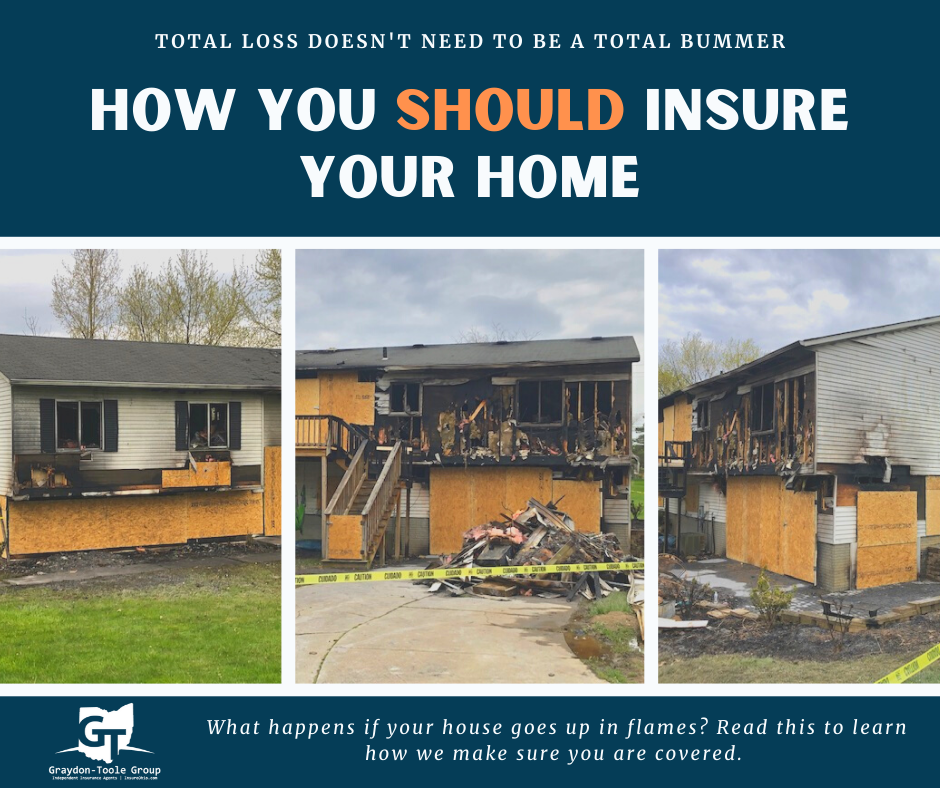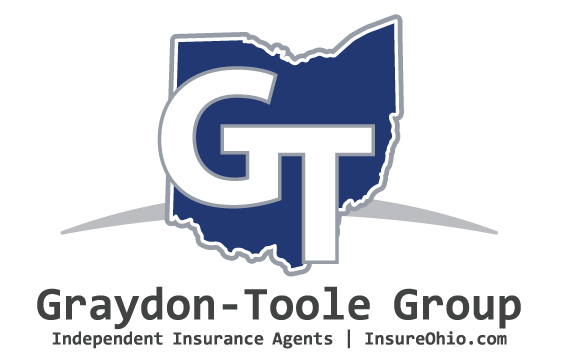Call for a Consultation!
440-349-3670
Hours: Monday - Thursday:
8:30AM to 5:00PM.
Friday: 8:30AM to 4:30PM.
Total Loss Doesn't Have To Be A Total Bummer
|
Tips on Insuring Your Home |
 How much coverage do you really need?
How much coverage do you really need?
One word: Replacement Cost. If it is your personal residence, your home should be insured to the amount it would cost to replace the home and not what it may sell for on the market. Insurers and homeowners share a common goal, of reducing exposure to losses (from fires to theft to catastrophic storms) and ensuring that consumers have adequate homeowners coverage in place to recover from financial losses that can occur. As your insurance agent, we continually strive to use the most accurate tools in helping homeowners make the right coverage decisions.
1.Make sure you update you limits overtime
The issue of underinsurance (insurance to value) usually arises following a major catastrophe that destroys many homes in a particular area. In the aftermath of a catastrophe, the cost of rebuilding can skyrocket and consumers who have not recently reviewed and updated their insurance policies sometimes find that they do not have enough coverage to rebuild. This is why insurers encourage homeowners to conduct a yearly review of their insurance needs.
- Did you remodel your home?
- Did you add an addition?
Although it is impossible to precisely predict the exact cost of rebuilding a home at some future date, it is important to insure the home for an amount that takes into account rising building costs.
Once the replacement costs are estimated, the insurer can help the homeowner determine how much coverage they have and ensure the policy best fits the consumer's needs.
Understanding the terms of the policy
Consumers need to recognize the difference in the market value of a home, which is what it can be sold for, the assessed value, which is what the taxes are paid on, and the replacement cost, which is the amount needed to rebuild the home if it is destroyed. The replacement cost has nothing to do with the purchase price of the home, the land value or the amount of the mortgage.
Replacement Cost policies cover the cost of replacing the damage to your home up to your policy's limits. Under these policies if a home is insured for $100,000, the homeowner will receive the amount necessary to replace or repair the structure up to that amount.
Extended Replacement Cost coverage provides a certain percentage over the policy limit to rebuild your home -- so if building costs go up unexpectedly, there are additional funds available. Most homeowners policies provide "extended replacement coverage" which provides coverage up to the limits specified in the policy plus an additional amount of up to 20 percent or more.
Actual Cash Value Coverage is determined by taking the replacement cost minus depreciation based on the average time that item is expected to last. For example, a "20-year" roof that is damaged and must be replaced that is 10 years old would have depreciated 50 percent. Therefore, the Actual Cash Value would be the replacement cost minus 50 percent. Under this type of policy it is important for the homeowner to increase the limits to ensure that the coverage keeps pace with market conditions.
Many insurers offer policies that factor in increases in building costs and automatically increase the value for which the home is insured each year. However, these adjustments may not keep pace with the market conditions that affect the actual cost to replace a home in a specific area. The homeowner is still responsible for getting replacement cost estimates and working with experts who stay abreast of building code changes, the cost of labor and constructions materials.
Homeowners Know What is in Their Best Financial Interest
Helping consumers adequately insure their home is in the best interest of the homeowner, insurer and local community. Insurers can be very helpful in educating consumers so that they understand their options and have accurate pricing information on available coverages.
Ultimately, however it is the consumer's responsibility to determine the appropriate amount and type of coverage that best fits their needs.
Recommendations:
- Conduct a yearly insurance review of their insurance policy limits to ensure they are adequately insured with coverages that best fit their financial needs
- Check with local builders for current costs for building new homes, and then add at least 10-20 percent - rebuilding a property will cost much more than building a new home;
- Make certain there is a "buffer" with an additional percentage to increase their coverage amount in the event of a loss - commonly called Extended Replacement Cost.; and
- Even if your homeowners policy has an inflation guard that adjusts to increase the dwelling coverage limit, check to make sure that the amount is adequate.
- Talk with your insurance company or agent about additional coverages such as flood insurance or earthquake insurance. The standard homeowners policy does not cover losses that result from floods or earthquakes due to the unpredictability and widespread catastrophic nature of these events. In addition it is important to note that the standard homeowners policy also does not cover landslides, mud slides or sink holes. However, coverage for these events may be available as an endorsement to the homeowners policy or under a separate policy.

 View Cart []
View Cart []